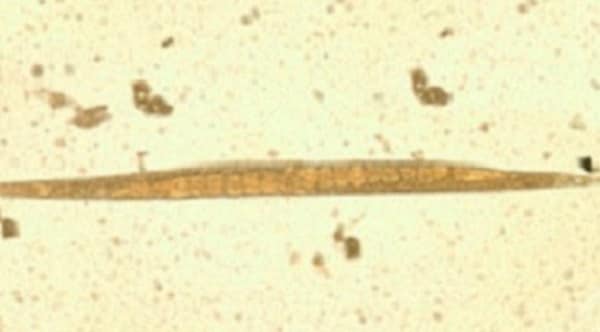Key points
- Strongyloides is a parasitic roundworm that infects people.
- It can cause stomachaches, diarrhea, and rashes.
- Most people have no symptoms, but people with immune disorders or taking drugs affecting immunity can get severely ill.
- Antiparasitic drugs can treat severe cases of strongyloidiasis.

Overview
Strongyloides is a type of nematode or roundworm parasite. A parasite is an organism (a living thing) that lives on or inside another organism. It can infect people through exposed skin, such as bare feet, and cause a disease called strongyloidiasis.
Strongyloidiasis can cause stomachaches, diarrhea, and rashes. Most people infected with Strongyloides have no symptoms and may not know they're infected. However, people who have weakened immune systems can become severely ill or die from strongyloidiasis if not treated.
Strongyloides is usually found in tropical regions, particularly Southeast Asia and the South Pacific. However, it can occur anywhere, especially in warm, wet, rural areas.
The best way to prevent Strongyloides infection is to wear shoes when you are walking on soil, avoid contact with fecal matter or sewage, and clean up after dogs. Use improved sanitation facilities, if available, to ensure people do not have contact with human waste.
Signs and symptoms
Most people infected with Strongyloides do not have any symptoms. But in people with more severe infection, symptoms may include:
- Abdominal (belly) pain
- Bloating
- Heartburn
- Occasional diarrhea and constipation
- Skin rashes
- Dry cough
In rare cases, strongyloidiasis can cause:
- Arthritis
- Kidney problems
- Heart conditions
Strongyloidiasis can be severe or even life-threatening in people with immune disorders or who have health conditions that require them to take drugs that weaken their immune system (e.g., corticosteroids).
Risk factors
You are more likely to become infected with Strongyloides if you:
- Travel to tropical regions, such as Southeast Asia and the South Pacific
- Live in rural areas or areas with warm, wet climates
- Live or work in agricultural settings
- Use an unimproved sanitation facility (when there is no sanitary separation of human waste from human contact)
- Live in long-term care facilities
How it spreads
Strongyloides infects people when they touch soil contaminated with young roundworms (larvae), which are too small to see without a microscope. The roundworms dig into your skin and spread through the body, settling in the small intestine, where they lay eggs.
Once the eggs hatch, most of the roundworms pass out of your body in your feces (poop). But some may mature and re-infect the body by digging into the walls of the intestine or anus.
Strongyloidiasis Lifecycle
In rare cases, Strongyloides may also spread from person to person through:
- Organ transplants
- Facilities for people with cognitive disabilities, who need help with activities of daily living and personal hygiene
- Long-term care facilities
- Daycare centers
Prevention
The best way to prevent Strongyloides infection is to wear shoes when you are walking on soil, avoid contact with fecal matter or sewage, and clean up after dogs, which can also be infected with roundworm. It is also important to use improved sanitation facilities, if available, to ensure separation of human waste from human contact.
